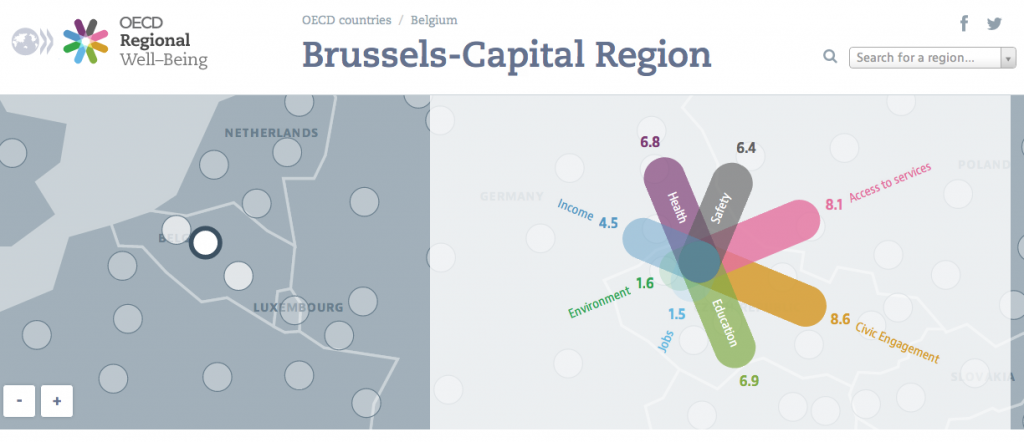How can growing cities ensure the well-being of their citizens isn’t sacrificed in their growth? That was one of the questions I had in mind when delivering a guest lecture on happiness to a group of students from Erasmus University Rotterdam in the Netherlands. The students, enrolled in a programme on city development, were specialising in ‘Urban Development, Wealth and Well-Being’. Studies of happiness seem to have gotten a lot more common in the few years I’ve been out of university!
My presentation was centred on the argument that the well-being and happiness of citizens should be a leading objective in urban planning and city development. Politicians and policy-makers should use existing regional indicators, such as the OECD Better Life Index or the Social Progress Index (SPI), to monitor their performance. Comparing scores with benchmarks of their peer group can help spot weaknesses.
For instance, the Brussels region has a high GDP, but is doing worse on many other progress indicators, as the slides in the deck below show. The South Holland region of Rotterdam and The Hague ranks highly in the SPI, but shows weaknesses in education, environmental quality, and some health and safety indicators.
Students in the group seems to see the arguments, but also had critical questions: can you objectively measure what happiness or well-being is? Can you decide for someone else how much education or the environment counts for their happiness? And can we trust politicians using well-being data fairly? Or would they simply use it as a narrative to get support, without doing the actual work?
I ended the workshop with several case studies, asking the students how they would advise mayors to resolve policy issues. They had some creative solutions: for instance, one of the case studies described a dynamic city that attracts so many people that house prices saw massive increases. One, admittedly complicated, suggestion was to cap rent prices so normal people could afford to live there. This case study was meant to be similar to London. Another creative idea by the group was to build a satellite city at a reasonable distance. In this way, people could enjoy well-being in their place of residence, while also enjoying the dynamic life that London has to offer. One thing became clear: the next generation of urban planners will be thinking about happiness in their cities.

